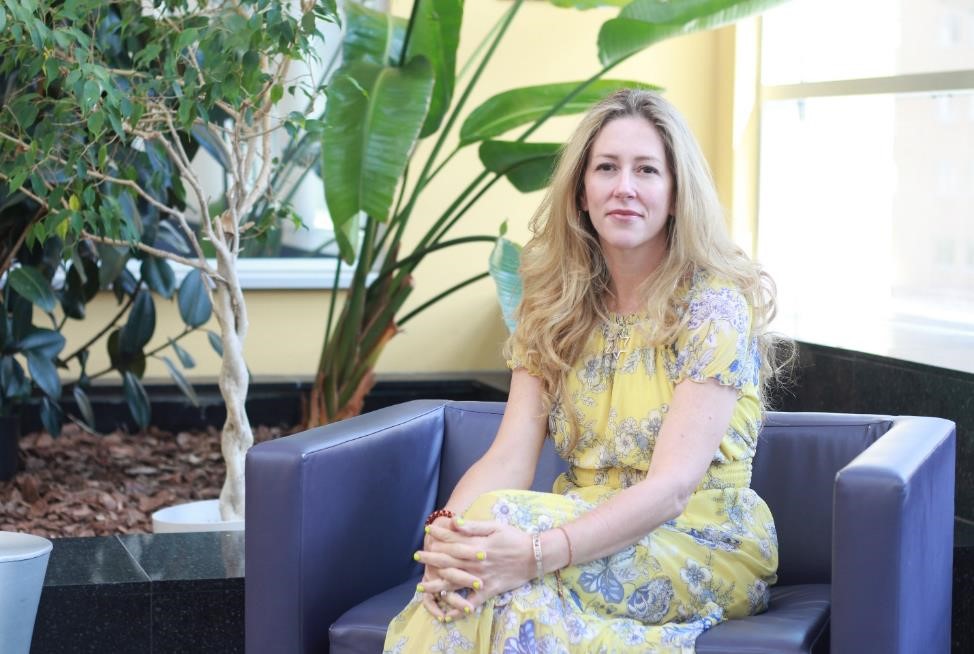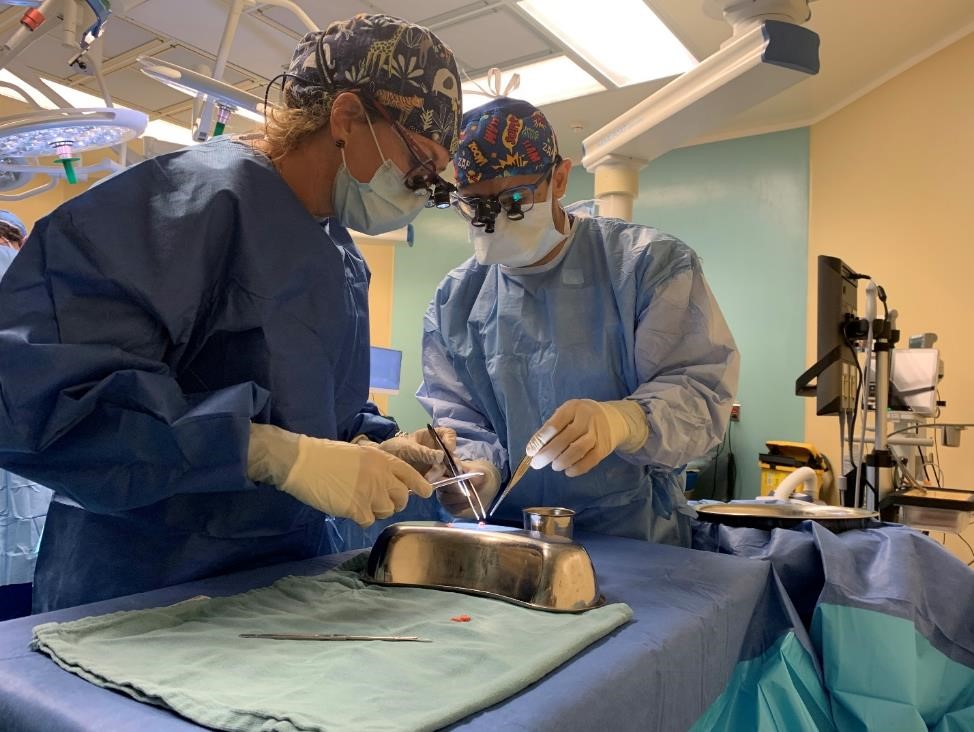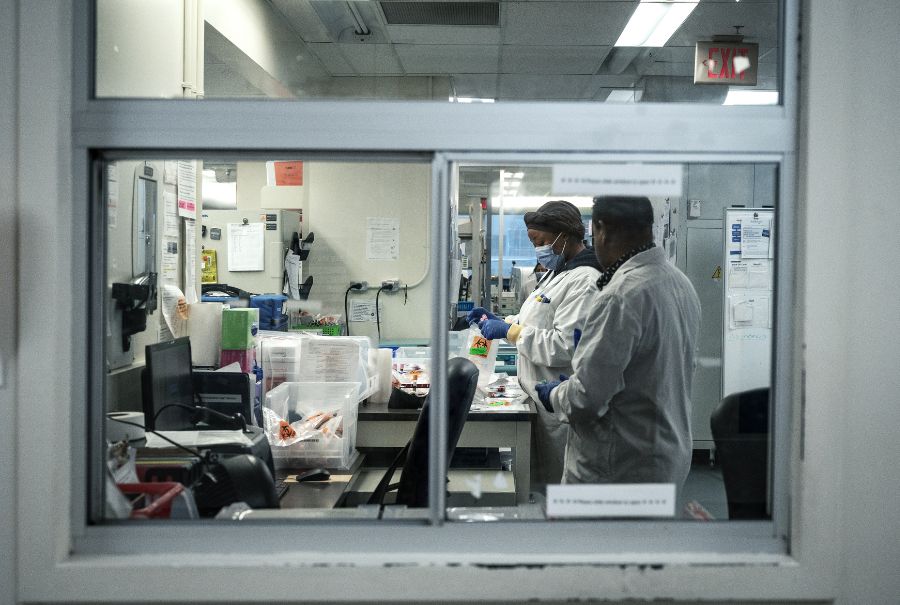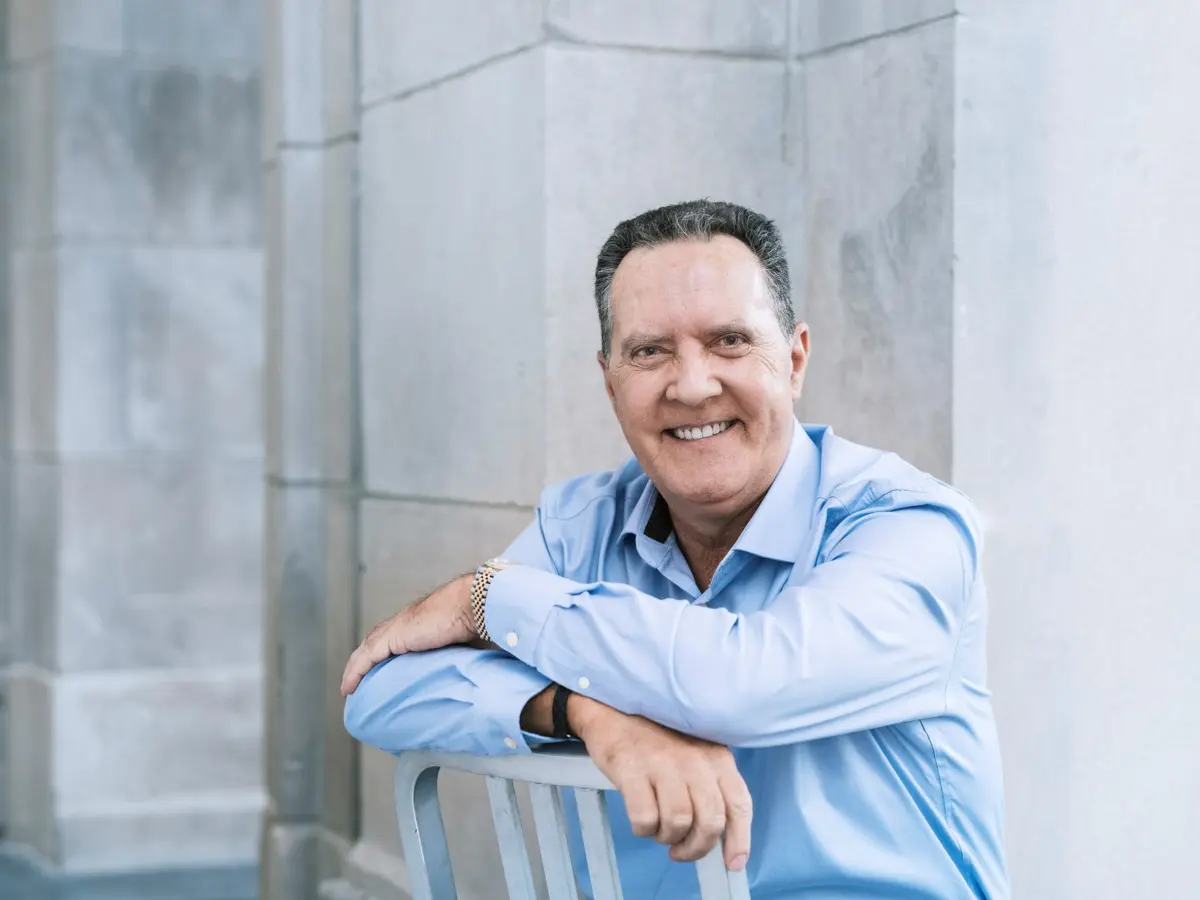Ottawa police officer Dawn Ethier (left) was cured of a condition called hypoparathyroidism following a groundbreaking procedure at UHN’s Ajmera Transplant Centre. Dawn is seen here with her youngest daughter Rebecca. (Photo: UHN)
When Dawn Ethier looks back at the past decade of her life, it is a blur.
The ordeal of taking several medications, almost a hundred pills per day, constantly having to measure mineral levels in her blood, and several visits to hospital was extremely taxing for the Ottawa police officer and mother of four, who battled with hypoparathyroidism.
“This disease took a lot of time away from me, from my family, from work, from caring about myself,” says Dawn, who is now cured after receiving a groundbreaking transplant at UHN’s Ajmera Transplant Centre.
“For a long time, I didn’t think I was worthy of anything, because I was so ill.”
Dawn had thyroid cancer over 10 years ago. The cancer was treated, but a complication she was left with was hypoparathyroidism – when someone has little or no parathyroid function.
The condition caused severe symptoms and even threatened Dawn’s life. She had cardiac episodes, pulmonary embolisms, seizures, loss of muscle control, and long-term impacts to her mental health.
After a lot of research and conversations with her care team in Ottawa, Dawn was able to connect with Dr. Karen Devon, an Endocrine Surgeon at UHN’s Sprott Department of Surgery, and discuss with her a bold idea – trying a parathyroid transplant.
With only one other case of this exact type of transplant recorded in the scientific literature, this was no small undertaking.
Dr. Devon had to do a lot of homework for a couple of years, including connecting with specialists around the world to discuss this case.
She had unwavering support from the Ajmera Transplant Centre, one of the largest transplant programs in North America, recognized for leading groundbreaking procedures.
“I was apprehensive of bringing this idea forward to leadership at the Ajmera Transplant Centre, and I was extremely encouraged by the response, which was to tell me that we have an obligation to help this patient,” says Dr. Devon, who’s also an Assistant Professor with the University of Toronto.
“That was very motivating for me,” she adds.

The journey was long, through listing and matching with potential donors, one failed transplant attempt in 2021, and managing all of this during a global pandemic. But on May 19, four healthy parathyroid glands were implanted on Dawn’s right forearm and they started functioning a few weeks later.
“This saved my life; it changed everything,” says Dawn, who has come off all the medications she was taking for her disorder, doesn’t need any infusion or regular visits to hospital day units, and has none of the symptoms of hypoparathyroidism.
“My mood, my personality is coming through. I’m no longer exhausted, I’m able to spend more time with my children.
“I can see a future now. This is not going to end up being something that will take me.”
Diving into the transplant world
Through this exciting case, Dr. Devon had her first experience as a transplant surgeon and worked closely with the Ajmera Transplant Centre team at Toronto General Hospital. An important ally was UHN’s Physician-in-Chief, Dr. Kathryn Tinckam, who is also a transplant nephrologist at the Ajmera Transplant Centre and holder of the Dr. Charles H. Hollenberg Chair in Medicine.
As with other organ transplant candidates, Dawn had to go through extensive testing. Dr Tinckam, who is also a consultant with UHN’s HLA Lab – the largest histocompatibility laboratory in Canada – helped guide the process.
“We test the blood of potential recipients frequently to quantify what percentage of all potential organ donors could be a suitable match. This helps us understand what chances that patient will have of a donor organ becoming available,” explains Dr. Tinckam, who is also Associate Professor of Medicine at University of Toronto.
“We then sequence a part of the DNA of all potential donors to confirm potential immunologic suitability for the recipient.”
She remembers that Dawn didn’t have the best odds. From her lab results, it was estimated that only 2 per cent of potential donors would be a match for her. This raised expectations even higher, especially going through a first failed attempt and waiting for the second chance that came in May.
“It was really a team effort. We all wanted this to work,” Dr. Tinckam recalls.

“After the second transplant, when we saw her PTH and calcium levels coming up, we were absolutely thrilled.”
For Dr. Atul Humar, the Director of the Ajmera Transplant Centre, the success of this case is a testament to the efforts of a stellar multidisciplinary team, that doesn’t shy away from a challenge.
“This is part of our DNA at the Ajmera Transplant Centre and UHN. We never shy away from trying something new, especially when patients look to us for life-saving and life-altering procedures,” says Dr. Humar, holder of the R. Fraser Elliott Chair in Transplantation Research at UHN and Professor in the Department of Medicine at University of Toronto.
This case also happened thanks to the support from generous donors to UHN Foundation, and to the support from Trillium Gift of Life Network (TGLN) at Ontario Health, the organization in charge of organ and tissue donation in Ontario, as it supported logistics for this innovative treatment, including the creation of deceased donor listing for parathyroid glands.
“Thanks to the commitment and dedication of all our partners, more patients will be able to enjoy vastly improved lives as a result of this innovative work,” says Rebecca Cooper, Vice President, Ontario Health (Trillium Gift of Life Network and Ontario Renal Network).
With this initial success, Dr. Devon and the team at the Ajmera Transplant Centre are working to study further and expand parathyroid transplant as treatment for severe hypoparathyroidism.
About parathyroid glands and hypoparathyroidism
- Humans have four parathyroid glands, which are about the size of grains of rice and are located around the thyroid.
- Their function is completely unrelated to the thyroid’s.
- Parathyroid glands produce PTH, a hormone that controls calcium levels in the body. It regulates essential functions such as muscle and nerve function, bone health, with long-term impacts on cardiovascular and mental health.
- Current treatment options for hypoparathyroidism include oral and intravenous supplementation of vitamin D, calcium, and other minerals and PTH replacement, but for severe cases like Dawn Ethier’s these strategies alone may not provide the best outcomes.
- The prevalence of hypoparathyroidism is an estimated 37 per 100,000 people per year in the United States.


